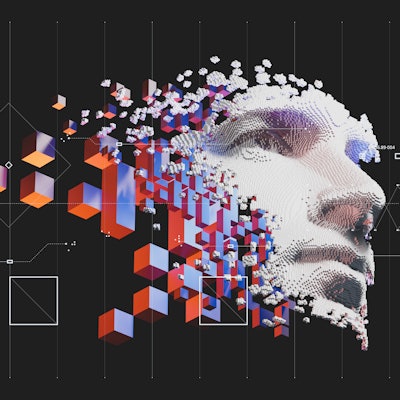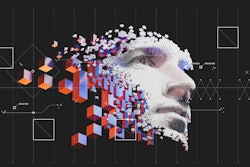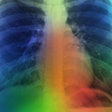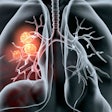
Artificial intelligence (AI) is becoming increasingly common in our everyday lives, but its role in clinical diagnostics is the subject of intense controversy.
While AI skeptics believe that nothing can replace human experience in the interpretation of test data, proponents of AI point to the many benefits that the technology -- in all its forms -- has brought to the diagnostics arena, including workplace efficiencies and improved diagnostics.
AI and machine learning are being applied broadly in healthcare to areas that include clinical data management, automation of diagnoses, and biomarker discovery. Recognizing patterns is a particular strength of AI tools, and it's paving the way for the emergence of a new generation of medical diagnostic devices that are sometimes capable of surpassing the detection skills of the best medical practitioners.
AI in healthcare has huge and wide-reaching potential; the future of healthcare and the future of machine learning and artificial intelligence in medicine are deeply interconnected. Clinical diagnostics is one of the areas in which AI is particularly promising.
What is AI in healthcare?
Artificial intelligence in healthcare refers to the use of complex algorithms designed to perform certain tasks in an automated fashion. The algorithms can review, interpret, and even suggest solutions to complex medical problems.
Healthcare's adoption of AI has been enabled by the shift from paper-based records systems to electronic records, as well as the implementation of digital health monitoring devices and advanced patient screening systems. These advances have resulted in an explosion of data that can be manipulated and analyzed using AI algorithms.
New applications of AI are in development to achieve outcomes such as the following:
- Predict diagnosis, death, or hospital readmission
- Improve upon standard risk-assessment tools
- Elucidate factors that contribute to disease progression
- Advance personalized medicine by predicting a patient's response to treatment
AI tools are also used to review data and uncover patterns in the data that can be used to improve analyses and uncover inefficiencies. Thus, digitization of test data is an intrinsic part of IT that has given rise to lab information systems, electronic health records, and digital pathology initiatives that can be found in many healthcare facilities.
Indeed, the earliest iteration of artificial intelligence IT has been present in clinical lab medicine for quite a while. Lab information systems, and high-end chemistry and hematology instruments employ reflex testing algorithms to verify and improve outlier test results.
Reflex testing and intelligent routing dynamic system software bring automated patient-centric workflow to the laboratory. By understanding the tests requested, sample volume available, and real-time analyzer capacity and status, these applications continuously calculate the most expeditious route for patient samples.
Interactive glucose meters are the most commonplace application of AI-incorporated devices. Test results and data trends inform the user of follow-on actions required. There is general consensus that this application of AI has greatly improved the lives of many people with diabetes. AI-driven glucose management devices help diabetic users interpret and utilize their test results to manage their diabetes.
AI and digital pathology
Digital pathology products and diabetes management devices were the first to come to market with data interpretation applications. The last few years have seen the use of AI interpretation apps extended to a broader range of products including microbiology, disease genetics, and cancer precision medicine.
More products have been cleared for clinical use, new applications have come to market, and many more are in development.
Diagnostics companies in collaboration with AI developers have begun implementing increasingly sophisticated machine-learning techniques to improve the power of data analysis for patient care. The goal is to use developed algorithms to standardize and aid interpretation of test data by any medical professional irrespective of expertise. This way, AI technology can assist pathologists, laboratorians, and clinicians in complex decision-making.
Digital pathology involves the analysis of high-resolution digitally scanned histology images using computational tools and algorithms. In the first step, a high-resolution image scanner scans the whole histology glass slide. A pathologist then reviews this image information.
The role of computer-based imaging is very important in helping pathologists make decisions. Therefore, digital pathology is an intersection of pathology and computers that is capable of replacing the conventional microscope-based diagnosis in the near future.
Digital pathology is enabled in part by virtual microscopy, a method of capturing microscopic images and transmitting them over computer networks. This allows independent viewing of images by large numbers of people in diverse locations.
A combined, end-to-end, automated solution for histology brings workflow efficiency that is a necessity now that workloads have increased and staffing is either scarce or too expensive. And digital pathology enables a next step in pathology: the big data era of medical care that is referred to as computational pathology.
Histology slide analysis is highly labor-intensive and subjective in nature. At least, this was the scenario until the commercialization of automation and digital image analysis. Now histology is following the trend already in action in other testing areas and is investing in end-to-end automation of the entire tissue process. From slide preparation to analysis to result reporting, combined solutions enable faster turnaround time while providing standardized results.
Preparation of histology samples has always been fairly automated, but companies have invested to improve upon this with new, faster tissue fixatives and systems that improve nucleic acid extraction from tissue samples. Of note is new instrumentation to automate RNA detection in fixed tissues. This is important for advanced companion tests.
Automated sample processing and slide strainers have been available for some 10 to 15 years; however, end-to-end automation, digital optics, and the AI algorithms and high-capacity computer power necessary to really make these systems work efficiently have only recently become available.
Innovation in immunohistochemistry (IHC) staining has evolved significantly over the last two decades. The process of staining has shifted from labor-intensive, manual techniques; to semiautomated instruments with off-line processes such as deparaffinization and antigen retrieval; to a new generation of baking-through-staining automated instrumentation systems that enable standardization, improved staining consistency, and expedited turnaround times.
What the vendors are doing
Which vendors are doing what in histology AI and automation? Histology market leaders Ventana Medical Systems (now part of Roche Diagnostics), Dako (now part of Agilent Technologies), and Sakura Finetek Europe have invested in advancing the automation of histology.
Ventana's first foray into automated histochemistry began with a number of automated market-cleared stainers: Ventana System for Primary Diagnosis, digital H&E; HE 600 system, a fully automated H&E staining; BenchMark Special Stains platform; and the Ventana Gram Staining Kit, automated for use on the BenchMark Special Stains instrument. Now the Roche Digital Pathology solution combines hardware, software, and the Ventana Companion Algorithm image analysis software to form an end-to-end solution.
Digital imaging specialists Aperio and BioImagine (now part of Roche Diagnostics) have commercialized IT tools that transfer digital images directly to a patient's electronic medical record and also allow pathologists to view slide images from remote locations.
The Dako Omnis automation solution comprises hardware, software, and reagents. The system automates IHC and in situ hybridization (ISH) processes, meaning entire patient cases can be processed simultaneously with continuous loading, batch loading, and overnight run options. Additionally, operations such as slide processing and instrument maintenance can be traced to individual operators. The system was developed in collaboration with the Tecan Group. Dako also offers the DakoLink software for use in Dako's Autostainer and Artisan instruments.
More recently, Dako and Omnyx (a joint venture of GE Healthcare and the University of Pittsburgh Medical Center) developed a clinical image analysis process for digital pathology in Europe. As part of the collaboration, Dako used its expertise in staining and image analysis to develop algorithms that are incorporated into the Omnyx digital pathology platform.
Sakura Finetek has been a leader in tissue sample preanalytical processing. The company markets the Tissue-Tek AutoTEC a120 automated embedder, a fully automated tissue embedder that features a cassette barcode reader for laboratory information system (LIS) connectivity and traceability of specimen blocks, and SMARTair technology that optimizes block quality.
Sakura also offers the VisionTek M6 digital microscope, a robotic imaging system that pathologists can use like a conventional microscope. VisionTek M6 incorporates a motorized brightfield optical system with multiple cameras to convert optical fields of view of specimens on glass slides, at various magnifications, into high-resolution digital images. Those images are displayed in real time on a high-resolution monitor for ergonomic viewing. The system provides real-time slide review for anatomical pathology, cytopathology, and hematopathology.
Leica Microsystems of Wetzlar, Germany, markets Digital Image Hub Enterprise, its clinical workflow software for digital pathology. It provides image management, integration, and communication capabilities in conjunction with the client viewer, SlidePath Gateway. Digital Image Hub Enterprise utilizes slide barcodes to identify and automatically consolidate multiple slides within a case into a work list. The system can then automatically associate the slides with appropriate case information by querying the laboratory information management system, thus presenting both case information and digital slides concurrently. Pathologists can also view their digital slides through internet browsers and on an iPad, allowing access anytime and anywhere.
Applied Spectral Imaging of Carlsbad, CA, has developed GenASIs Pathology, an automated IHC and chromogenic in situ hybridization (CISH) imaging and analysis solution. Biocare Medical of Concord, CA, provides automated instrumentation for IHC and ISH staining. The companies reported that they have tested and confirmed the combined solution's effectiveness in performing end-to-end IHC and CISH, imaging, analysis, and reporting.
In December 2019, Philips Healthcare announced plans to begin offering prostate cancer detection technology from Paige of New York City alongside its own digital pathology products such as Philips IntelliSite Pathology Solution, a whole slide imaging system with digital surgical pathology slide review features.
Paige received the U.S. Food and Drug Administration (FDA) breakthrough device designation and CE Mark in March 2019 and a CE Mark for its prostate AI-based module in November 2019. Paige was spun out from technology developed at Memorial Sloan Kettering Cancer Center (MSK) in New York City. Under Paige's 2018 licensing agreement with MSK, the company receives deidentified images of digitized slides to help it develop AI tools that can assist pathologists in identifying cancer.
Shara Rosen is an analyst for Kalorama Information, a leading market research firm in the clinical diagnostics industry.
Disclosure notice: LabPulse.com is a sister company of Kalorama Information.



















